BEVERLEY
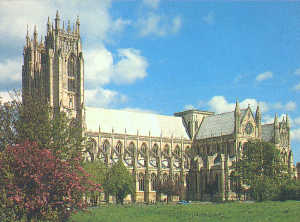 Beverley Minster is one of the most beautiful churches in East Yorkshire, and is a conspicuous landmark for many miles around. | 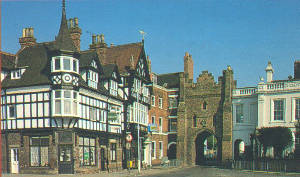 The North Bar is the last of the mediaeval gates of this once-walled town. |
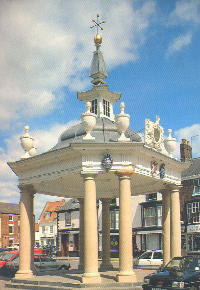 Beverley's market cross is in the Saturday Market in the town centre. |
Beverley is the county town and administrative capital of the East Riding of Yorkshire. Its name derives from "Beaver Lake," when both lakes and beavers were plentiful in the region - a long time ago! Its original function was as a market town for the surrounding farmland and Beverley still boasts two market places - Saturday Market and the smaller Wednesday Market. |

HEDON
Hedon was once a prosperous port when neighbouring Hull was still an insignificant fishing village called Wyke. Changing fortunes and royal patronage, coupled with the silting up of the deepwater channel leading to Hedon Haven, have left Hull as the major port and Hedon is now a small market town and dormitory for its bigger neighbour. Even so, Hedon remains fiercely independent and defends itself against any expansion into the green belt which maintains its separateness and country character. KINGSTON-UPON-HULL
Situated in the heart of what is known as the "Old Town," the Church of the Holy Trinity is the largest Parish Church in England and also the oldest brick-built building still in its original use. The open-air market surrounds its base on Market days - Tuesdays, Fridays and Saturdays - as in mediaeval times, and the indoor Market Hall is close by. The statue of King William IV faces up Lowgate towards Holy Trinity, and stays bright and shiny because it is covered with real gold leaf! The statue stands above one of Hull's amazing Victorian Public Conveniences; local legend has it that when the clock on Holy Trinity strikes 13, King Billy gets off his horse and goes down the steps to the toilet. Naturally, no-one has ever actually witnessed this phenomenon! Two views of Queen's Gardens, created when the old Queens' Dock was filled in. The dock in turn was formed from part of the moat which surrounded the city walls. Queen Victoria is another victim of Hull's obsession with its public loos. Like those presided over by King Billy, the "conveniences" under this statue in Victoria Square are well worth a visit (honestly!) if only to marvel at the mahogany, polished brass and beautiful tiling. Even the pigeons which sit at the Old Queen's feet are impressed. This Elizabethan Mansion is on High Street, with gardens running down to the River Hull, and was once the home of William Wilberforce. He was MP for Hull in the 19th century and was instrumental in bringing in the law which outlawed slavery throughout the British Empire. Wilberforce house is now a museum which tells the history of the slave trade and the story of the emancipation which Wilberforce brought about. You will find more pictures of Hull and district
[Home] [HTML 101 homework] ["Frames" test piece] ["Tables" #1 - pets] ["Tables" #2 - Guides UK] ["Tables" test piece]

The parish church of St. Augustine is in the very heart of this ancient town. It is rightly known as "The King of Holderness" and dominates both the town and the surrounding flat rural landscape.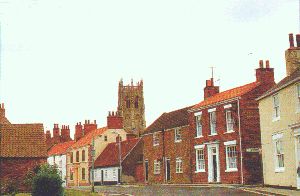
This is Baxtergate, where "gate" means street - Hedon was never walled. The small white cottage to the left of centre is Painter's Cottage, and is the oldest building in Hedon, dating from 1562.
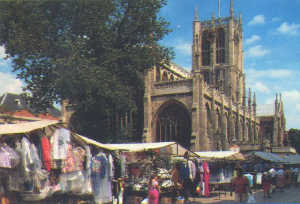
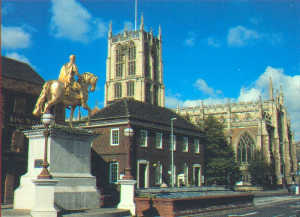
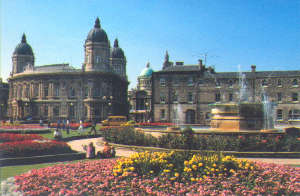
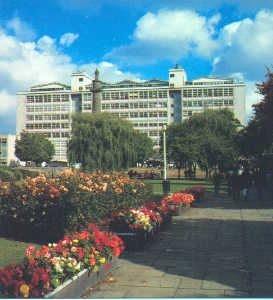
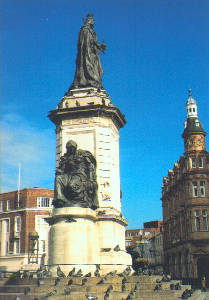
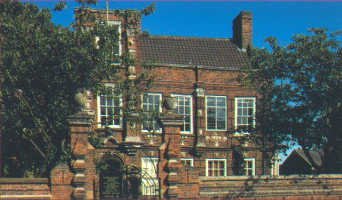
on the "Yorkshire" page; to visit the East Riding
village of Paull, click here.
[PSP 101 homework #1] [PSP 101 test set] [My "Page Three Girl"] [Yorkshire Pages] [WebtechU certificates etc.] [Links]